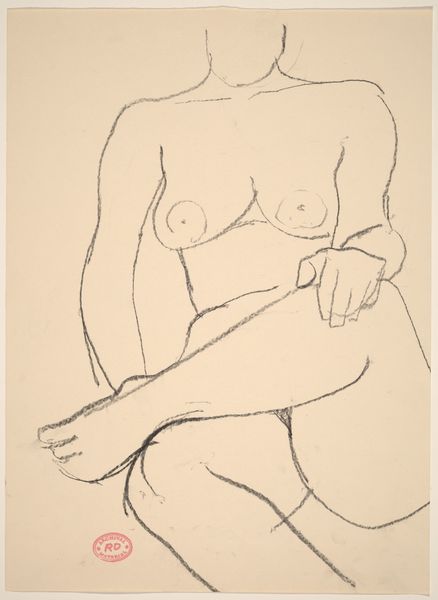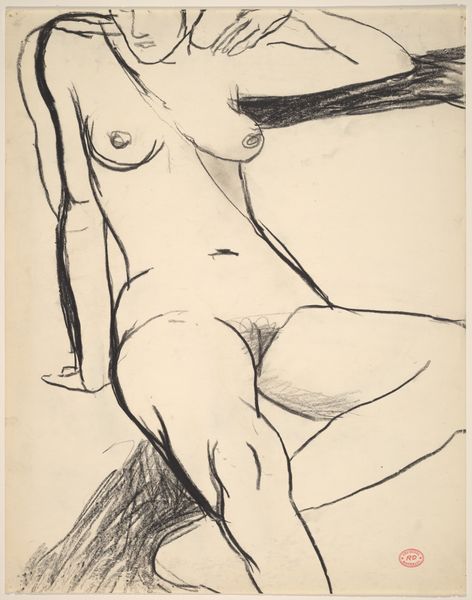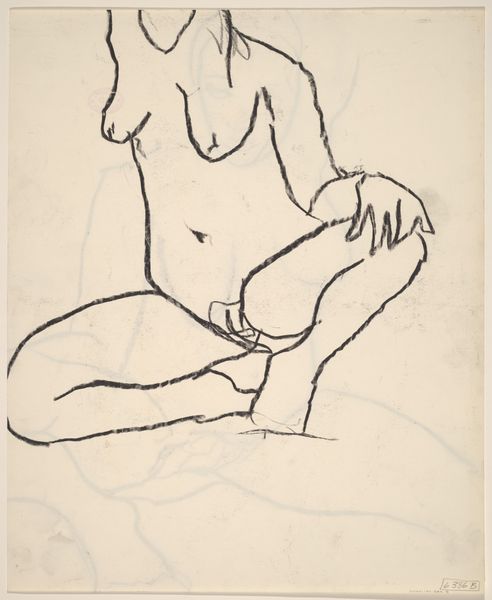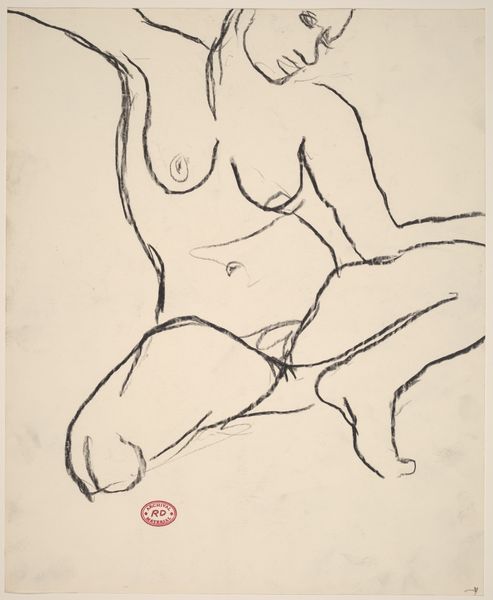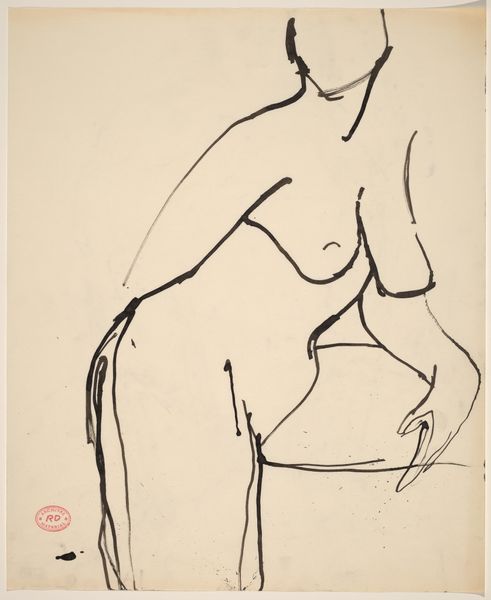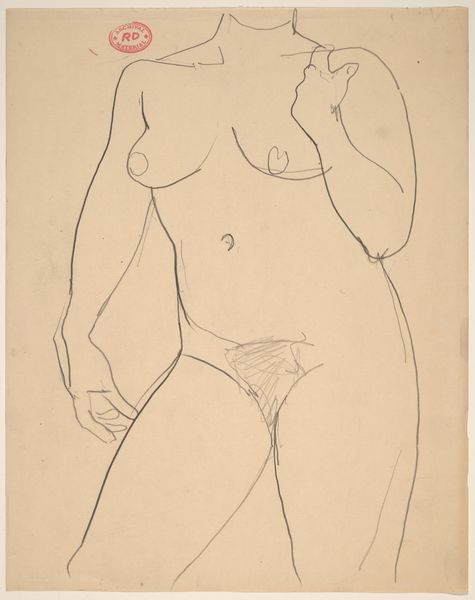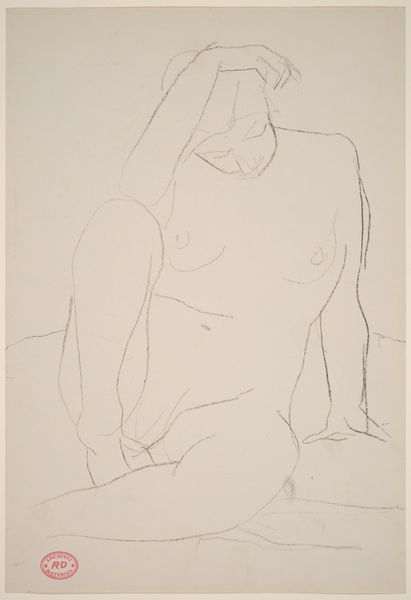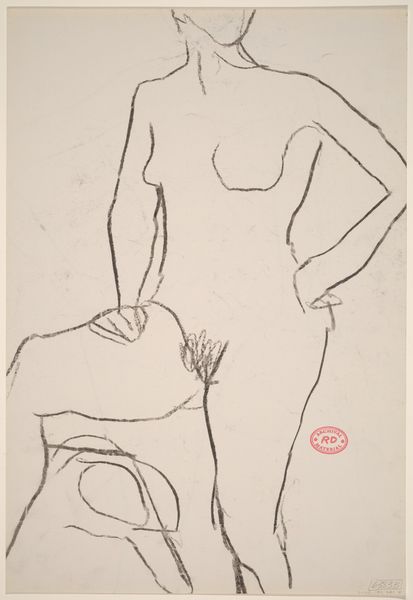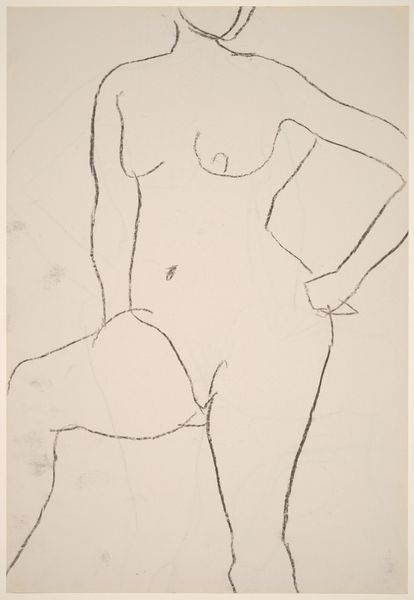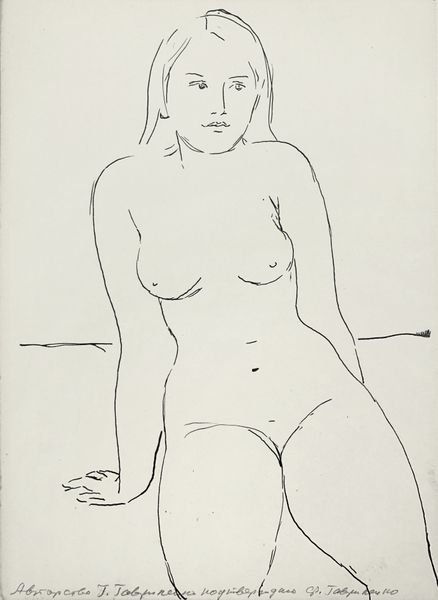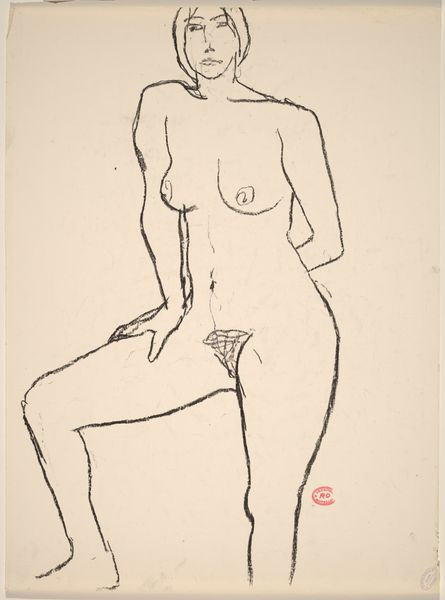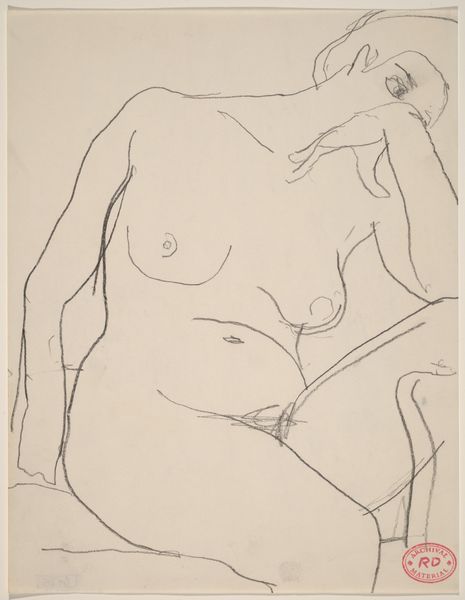![Untitled [seated female nude leaning on her right arm] by Richard Diebenkorn](/_next/image?url=https%3A%2F%2Fd2w8kbdekdi1gv.cloudfront.net%2FeyJidWNrZXQiOiAiYXJ0ZXJhLWltYWdlcy1idWNrZXQiLCAia2V5IjogImFydHdvcmtzLzBmMDU3MTI3LWY5MTEtNGU1OC05MzA0LWU5ZWJhZGEzOWJkNC8wZjA1NzEyNy1mOTExLTRlNTgtOTMwNC1lOWViYWRhMzliZDRfZnVsbC5qcGciLCAiZWRpdHMiOiB7InJlc2l6ZSI6IHsid2lkdGgiOiAxOTIwLCAiaGVpZ2h0IjogMTkyMCwgImZpdCI6ICJpbnNpZGUifX19&w=3840&q=75)
Untitled [seated female nude leaning on her right arm] 1955 - 1967
0:00
0:00
drawing, graphite
#
portrait
#
drawing
#
figuration
#
bay-area-figurative-movement
#
graphite
#
nude
Dimensions: sheet: 38.4 x 27.9 cm (15 1/8 x 11 in.)
Copyright: National Gallery of Art: CC0 1.0
Curator: Before us, we see a drawing by Richard Diebenkorn, dating from somewhere between 1955 and 1967. It's a graphite work titled "Untitled [seated female nude leaning on her right arm]". Editor: My immediate reaction is one of understated sensuality. The simple lines, the contemplative pose – it evokes a mood more than it aims for photorealistic accuracy. There is a certain intentionality in the omission of details that intrigues me. Curator: Indeed. Diebenkorn's nudes often serve not just as figure studies, but also as explorations of form and space within the picture plane. We must situate this drawing within the context of post-war American art where the female nude continued to be explored, even within the burgeoning abstract expressionist scene. Editor: Right, and think about how the male gaze typically frames this subject matter. There's something interesting in the almost melancholic quiet here, the avoidance of performative femininity we usually find when the subject is undressed. Does this work transcend some of those ingrained power dynamics? Does it provide a woman-centric vantage point? Curator: It certainly avoids the overt idealization of the female form we find in earlier traditions. One could read Diebenkorn's looser, more gestural lines as a reaction against those historical constraints. The politics of imagery around the nude are undoubtedly complex. And his work here may reveal how socio-political forces of his time allowed or constrained how the female body was perceived and rendered. Editor: The gaze of the figure herself is downward. It isn't just us looking at her; she's actively not meeting our gaze. Is she reflecting? What implications might this averted gaze and posture hold? It speaks to an internal narrative, beyond the aesthetic. Curator: That’s insightful. The absence of explicit detail encourages projection and allows for a greater interpretive latitude, for the artist and the viewer. The museum displays the work to provoke dialogue about representations of gender and identity and how these resonate, or fail to resonate, within contemporary audiences. Editor: Well, I leave this encounter contemplating the ongoing struggle for nuanced and equitable representations of the human form, the dialogue of then and now, as reflected in works like this. Curator: And I will continue to ponder the place of this kind of figuration within Diebenkorn's broader trajectory, his move away from explicit representation and his navigation of the public’s engagement with modern art.
Comments
No comments
Be the first to comment and join the conversation on the ultimate creative platform.
